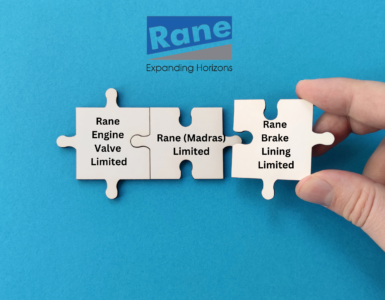While big ticket acquisitions like the $12.7-billion Tata Steel-Corus deal may draw major headlines and peer’s envy, it is small ticket deals like Dabur buying Balsara group for $35 million or Emani acquiring Zandu Pharmaceuticals’ stake are successful in creating value. Small acquisitions reward the shareholders the most and are the easiest for post-merger integration. On the other hand, most of the big-ticket deals in the past have not rewarded their shareholders’ well. The capital markets tend to reward companies that successfully complete the integrating process.
Small deals: More value for money
Data analysis by Business Standard of 273 domestic as well outbound deals from India since 2005 shows that small deals have given much higher returns to shareholders as compared with big deals. The average deal size for the companies that delivered positive returns to shareholders after the acquisition is $160 million. In contrast, the big ticket deals with an average size of $283 million delivered negative returns to shareholders. The analysis was done purely to evaluate M&A from the shareholders’ point of view as every shareholder looks for positive returns, barring phases of market volatility. The returns are measured in terms of the share price of the company after the acquisition till February this year.
One example of high shareholders’ returns is Dabur India, which had done a series of acquisitions to emerge as one of the top consumer goods manufacturers in the country. It acquired three Balsara group companies in 2005 for $27.4 million. The acquisition strengthened Dabur’s position in oral care as Balsara had three oral care products such as Promise, which has a unique clove oil positioning, Babool toothpaste in the value segment and Meswak toothpaste in the premium segment. Balsara group was the pioneer in herbal oral care products launched in the seventies. So, Balsara’s herbal oral care range was a good strategic fit for Dabur, whose products are also positioned on the herbal platform. The acquisition provided several synergies to Dabur on the manufacturing and marketing front as Balsara had three manufacturing facilities at Silvassa, Kanpur, and Baddi. Continuing on its acquisition spree, Dabur India acquired Femcare Pharma for $41 million in 2008 to enter and grow its footprint in the skin care business. It also acquired Turkish personal care firm Hobi Kozmetik Group for $69 million in 2010 to strengthen its presence in the Middle East and North Africa. The company also acquired US-based Namaste Laboratories for $100 million in 2010 to enter the ethnic hair care product market in the US, Europe, and Africa. The group successfully integrated all the acquisitions and gave good returns to shareholders. Dabur India’s revenue grew from Rs 3,287.67 crore in FY11 to Rs 5,431.28 crore in FY15. The company’s net profit grew from Rs 471.43 crore in FY11 to Rs 762.58 in FY15 and EPS grew from 2.71 in FY11 to 4.35 in FY15.
Similarly, in May 2008, Emani acquired a 23.8% stake from the Vaidya family, one of the two promoter families of Zandu Pharmaceuticals for $28 million. After resistance from the Parikh, the other promoter family, Emami acquired an additional 38.2% from them for $113 million. The deal executed in three tranches including the open offer, valued the equity of Zandu at $228.8 million. Zandu Pharma’s product portfolio comprising ch Awan rash, pain balm, honey had a strong ayurvedic product line that fitted well within Emani’s own product portfolio and also provided distribution synergies.
There are many examples of how small acquisitions helped in better integration and returns to shareholders. Asian Paints got access to 22 emerging markets after acquiring Berger International. It has integrated and turned around the company successfully. On that note, even Godrej Consumer (GSPL) also got a strong foothold in the UK and South Africa with its acquisition of Keyline and Rapidol, which also served as complementary brands for the company. The company then acquired Frika Hair for around Rs 80 crore in South Africa. The deal helped GSPL consolidate its presence in hair extensions, a large market in the African continent. Most international personal care majors such as L’Oreal and Unilever have been rushing to Africa to partake of the growth in what is described as the “dry hair” markets there, which is basically the market for wigs, braids and hair extension. In fact, the African continent provides a huge long-term growth opportunity for GSPL and inorganic growth can enable the company to chart its long-term growth strategy.
In another move, by acquiring personal care portfolio of Paras Pharma from Reckitt Benckiser, the Harsh Mariwala-promoted company has filled the crucial gaps in its portfolio. In that process, it has extended its presence well beyond hair oil, hair treatment, and soaps into skin creams, lip balms, hair gels, hair serums, and deodorants. However, the acquisition had its own set of challenges. Reckitt Benckiser had stopped investing in the brand, given its disinterest. Marico management housed the new team separately in New Delhi away from its own corporate headquarters in Mumbai. The distance helped and the team functioned with agility as it did when it was with Paras. The acquisition made sense from a strategic point of view because compared to other FMCG categories, personal care products typically enjoy gross margins of 40%
Drug-maker Lupin’s recent spate of acquisitions is a concerted effort to unlock the next phase of growth. The company, which closed FY15 with Rs 12,600 crore in revenue has been on a shopping spree for a few years, snapping up mostly small-ticket companies across the globe. Half of the 12 companies acquired by Lupin have been bought over the last two years and they are smaller in size but offer a portfolio of drugs. Lupin has acquired companies in countries such as the US, Japan, Russia, South Africa, Australia, Brazil, and Mexico. Pharma companies like Cipla, Dr. Reddy’s, Strides Shasun and Wockhardt have made small acquisitions. GlaxoSmithKline is an example of benefits of smaller acquisitions. Since 2007, the global pharma giant has had a vigorous acquisition strategy-doing 17 deals in just 30 months at one point—with a focus on high-growth, low-risk targets. Acquisitions included one large deal, five medium-sized transactions, and a continuous flow of smaller acquisitions. In the information technology space, small acquisitions made by Tata Consultancy Services, Infosys, Wipro, and HCL have been quite successful
Early integration process
While large corporate M&A teams can work through deals more quickly, but they can sometimes get so focused on finding the next one that they lose a clear connection to the strategies of the business units. Smaller companies are more focused to connect the dot and ensure the success of the deal. Smaller deals take small risks and minimize the risks like building executives and board alignment, keeping business secrets from potential suitors, conducting effective due diligence, mobilizing resources for effective merger integration. In contrast, larger deals take big risks as they focus on new business than the core business and strategy which may take away large resources.
Global perspective
Mergers and acquisitions represent an inherent part of a growth strategy that enables companies to strengthen their market position much faster than is possible when they decide to grow internally. The growth of a company through M&A provides access to new markets and resources, A study conducted by Davor Filipovic of the University of Zagreb shows that there is a statistically significant correlation between the relative size of the target company compared to the acquirer and the target company’s performance after the takeover. It is important for the success of the takeover that the target company is smaller than the acquirer.
Globally, according to an NBER study, large firms have destroyed $230 billion of shareholder wealth over 20 years. In contrast, small firms defined as companies whose market capitalization is equivalent to the smallest 25 percent of companies listed on the New York Stock Exchange in each year, created $8 billion of shareholder wealth through their transactions. The study shows that cash deals are associated with superior returns for acquirers as compared with equity deals. this may be so also because cost of acquisition in case of equity as currency may not get properly captured hence fails to generate superior return Both It shows that an acquisition made by a small firm – regardless of funding and the nature of the target – has an announcement return that is 1.55% higher than a comparable acquisition made by a large firm.




